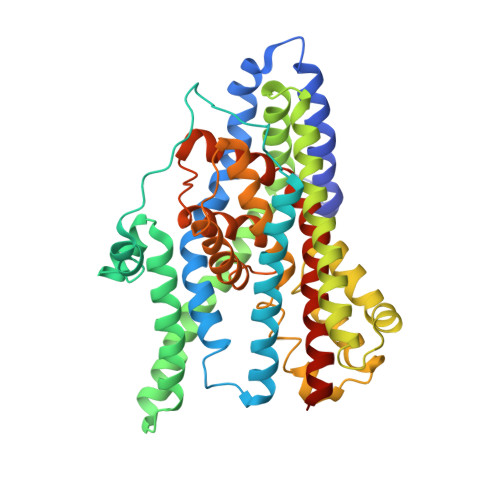Transport mechanism of a bacterial homologue of glutamate transporters.
Reyes, N., Ginter, C., Boudker, O.(2009) Nature 462: 880-885
- PubMed: 19924125
- DOI: https://doi.org/10.1038/nature08616
- Primary Citation of Related Structures:
3KBC - PubMed Abstract:
Glutamate transporters are integral membrane proteins that catalyse a thermodynamically uphill uptake of the neurotransmitter glutamate from the synaptic cleft into the cytoplasm of glia and neuronal cells by harnessing the energy of pre-existing electrochemical gradients of ions. Crucial to the reaction is the conformational transition of the transporters between outward and inward facing states, in which the substrate binding sites are accessible from the extracellular space and the cytoplasm, respectively. Here we describe the crystal structure of a double cysteine mutant of a glutamate transporter homologue from Pyrococcus horikoshii, Glt(Ph), which is trapped in the inward facing state by cysteine crosslinking. Together with the previously determined crystal structures of Glt(Ph) in the outward facing state, the structure of the crosslinked mutant allows us to propose a molecular mechanism by which Glt(Ph) and, by analogy, mammalian glutamate transporters mediate sodium-coupled substrate uptake.
Organizational Affiliation:
Department of Physiology and Biophysics, Weill Cornell Medical College, 1300 York Avenue, Box 75, New York, New York 10065, USA.

















